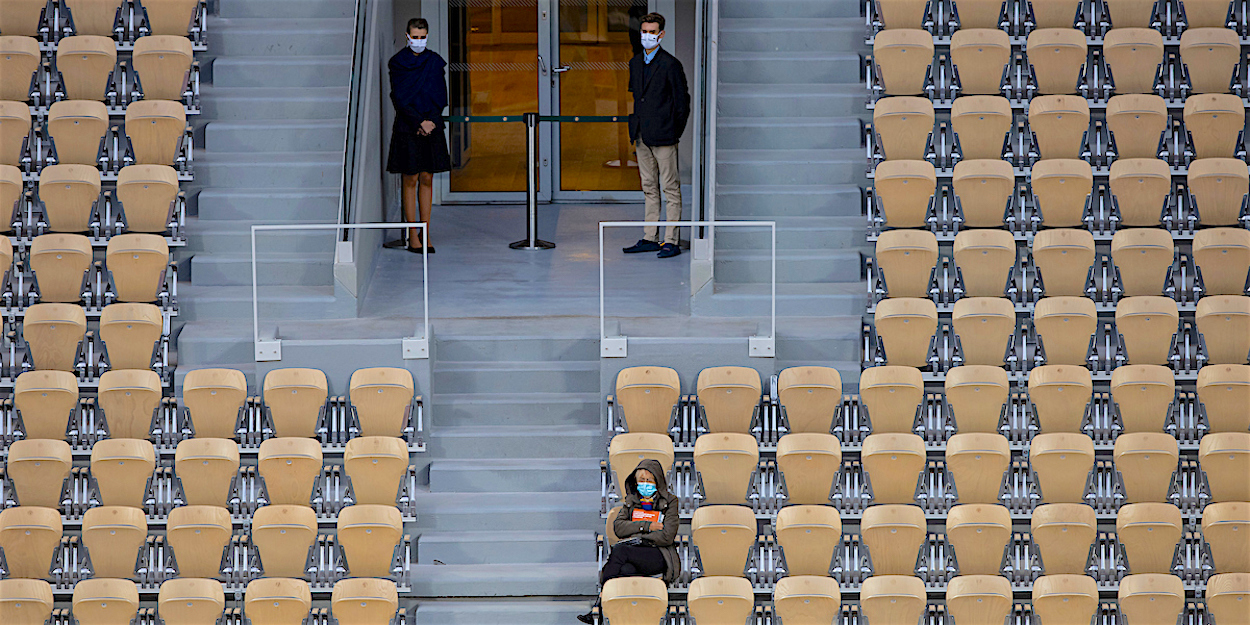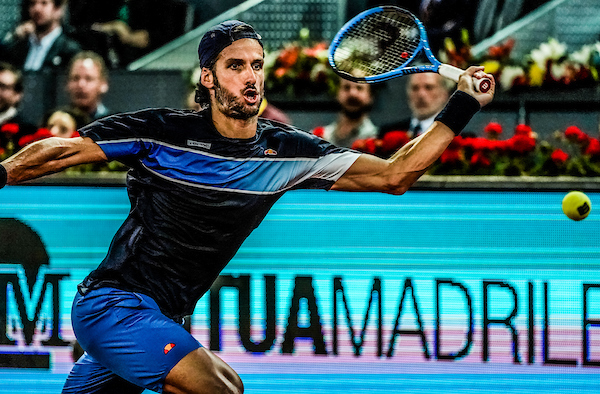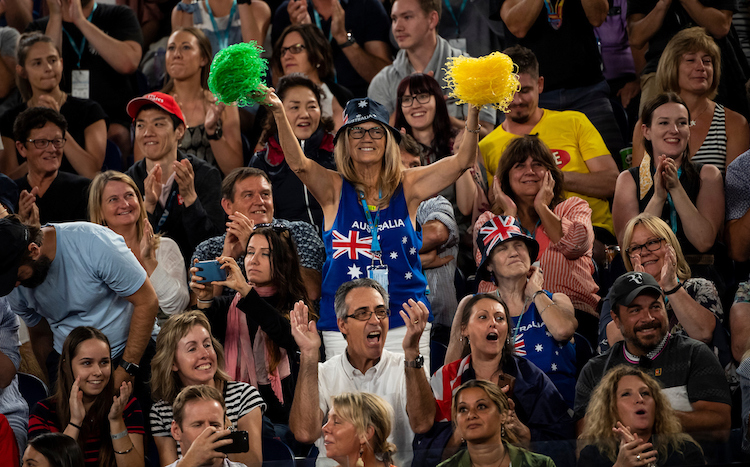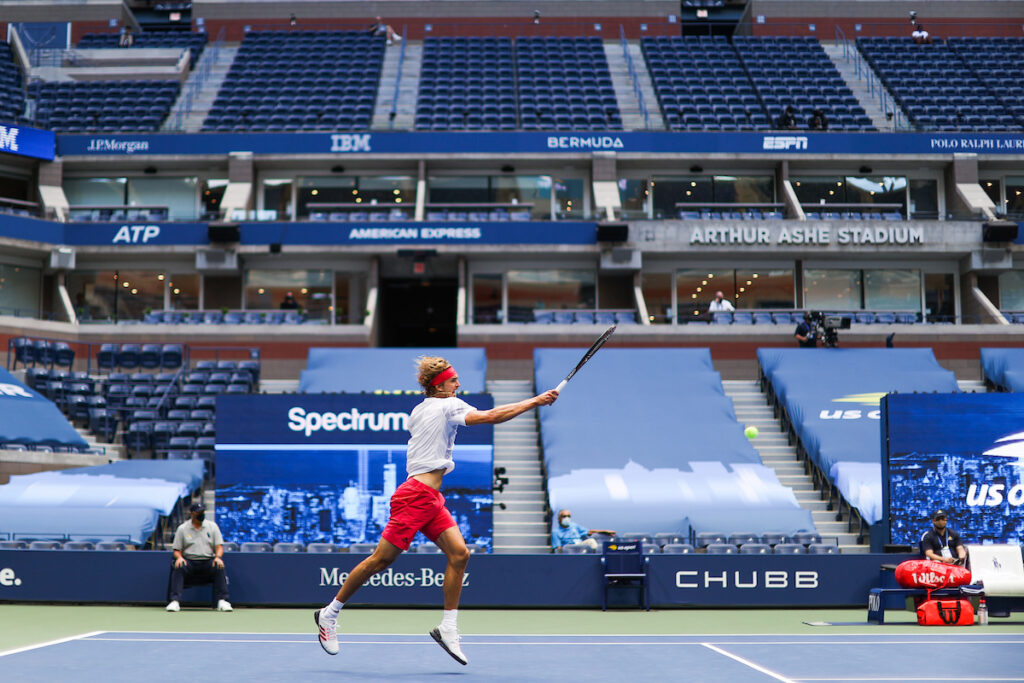
Tennis in the COVID era: Is this the new normal?
The 2021 season will start with tournaments confronting the same COVID issues that tennis has had to deal with since competition resumed this summer. Paul Newman says that continuing restrictions on spectators will present tournaments with major financial challenges

Feliciano Lopez, pictured here now playing at the tournament where he is now tournament director, says that reductions in prize money are inevitable
The new year usually brings the prospect of a new beginning, but the 2021 tennis season has started in much the same way that the current campaign is ending. The Auckland Classic, which has been a big part of New Zealand’s sporting landscape for more than 60 years and is the tournament where many players traditionally start their season, has become one of the first coronavirus casualties of 2021. New Zealand has had a better record in controlling infections than most countries, but in announcing the cancellation of the event, Karl Budge, the tournament director, stressed: “Safety has to be our priority.”
At least it looks likely that the Australian Open will go ahead, albeit with many safety measures in place, including limits on the number of spectators. Tennis Australia is hoping to fill up to 50 per cent of the seats at Melbourne Park, but the French tennis federation had similar plans for Roland Garros, only for the number of spectators to be cut by local health authorities and ultimately reduced to just 1,000 people a day.
Although infection and death rates have been appreciably lower than in many other countries, Australia has taken strong measures to restrict the spread of the virus, with both national and state borders tightly controlled. Melbourne is the capital of Victoria, which has been the Australian state with the most infections. However, a strict lockdown in the city has had success and there are hopes that many restrictions on movement will be lifted before the end of the year.
“The companies and the sponsors, they might have to fire employees. This is happening everywhere in the world, so the first thing they cut is sponsorship and this is going to be affecting tennis massively” Feliciano Lopez
By this time of the year tennis usually has its schedule for the following season firmly in place, but the shape of the 2021 calendar is likely to remain uncertain for a good while yet. Even tournaments that go ahead will probably not know until much closer to the time whether they will be able to admit spectators or not. Wimbledon, for example, is preparing for a number of different scenarios next summer, including holding The Championships in empty stadiums.
In the last few months of 2020, nevertheless, tennis proved its resilience. Two Grand Slam events were staged, despite no spectators being allowed at the US Open and only 1,000 a day at Roland Garros. Going ahead with the tournaments has provided entertainment for tennis fans the world over and has generated income for players who were starting to worry where their next pay cheque would come from.
Both tournaments shifted the balance of prize money towards players who lost in the early rounds. Wimbledon, meanwhile, thanks to the diligence of the All England Club in having pandemic insurance in place, was even able to pay players despite being the only Grand Slam tournament in 2020 that did not take place.

There will be no packed crowds like this at the Australian Open this year
Thanks largely to their income from broadcast rights, the Grand Slam events should be able to ride out the pandemic without any great threat to their financial security, but the same cannot be said for smaller tournaments, especially if there are continuing restrictions or even complete bans on spectators. As a general rule ticket sales account for about a third of tournament revenues, sponsorship for another third and media rights for the rest.
Denis Naegelen, who runs the Strasbourg Open, said it had been “almost a miracle” that his tournament had gone ahead this year, with 1,500 spectators attending every day, after it was moved to a September date following postponement in the spring. He is already concerned about next year’s tournament, which is scheduled to take place in May in the build-up to Roland Garros.
“My worry is really what will be happening to the economy,” he said. “We are supported by sponsors. We are supported by the local authorities. They have spent a lot of money this year to support the industry, to support the economy, and also to support sports events.”
“We have to understand that tennis is not going to be the same, at least for one, two, three years, I don’t know how long”
While the US and French Opens cut their prize money pools by seven and 11 per cent respectively, much bigger reductions are likely at many smaller tournaments, especially if spectators are excluded or limited in number.

Tennis tournament organisers will be hoping they can avoid a total ban on spectators such as was seen at last year’s US Open
Feliciano Lopez, who has been juggling the latter days of his playing career with his job as tournament director in Madrid, said that cuts in prize money were inevitable. “I think we need to understand the situation we are going through,” he said. “The companies and the sponsors, they might have to fire employees. This is happening everywhere in the world, so the first thing they cut is sponsorship and this is going to be affecting tennis massively.
“We have to understand that tennis is not going to be the same, at least for one, two, three years, I don’t know how long. But we need to survive this moment and we need to be united and we need to be together now. As a player you have to understand that there is going to be a reduction in the prize money, for sure.”
Another key question will be whether players will be prepared to travel long distances, particularly when quarantine arrangements are in place, either when they arrive at tournaments or return from them. A number of Europeans chose not to go to the US Open because they were concerned about safety. Will they want to spend 24 hours or more flying to Australia for the start of the new season?
Australia currently has strict quarantine measures in place for anyone entering the country, but the intention is for players to go into bio-secure “bubbles” on arrival. Tennis Australia is looking to establish those bubbles in the cities where warm-up tournaments will be played, enabling players to travel safely between competition venues, practice courts and hotels while effectively in quarantine.
“I think that in Australia it’s going to be 14 days’ [quarantine], but it’s going to be a bubble,” Halep said. “So it’s not that you have to stay 14 days just in a room – because if you do that you cannot play after 14 days without training. But if it’s a bubble like it was in Paris, I’m open and I’m going.”
Whatever plans are put in place, however, it is clear that everyone will have to be ready to adapt. “The one thing about the virus is that every day it brings new information, new science and new data,” Stacey Allaster, the US Open’s tournament director, said. “My advice is to stay the course. Stay focused that this is an invisible enemy.”
- Join the tennishead CLUB and receive £250/$350 of FREE GEAR including ASICS Gel-Resolution 8 trainers, shorts, shirt & socks
- Keep up to date with the breaking news & tennis action at our tennis news section
- Win amazing prizes by entering our competitions
- Learn more about your favourite players including Roger Federer, Rafa Nadal and Novak Djokovic
- Check out the latest tennis equipment with our tennis gear reviews
- Receive regular updates in our legendary free newsletter
- Read in depth features with stunning photography in tennishead magazine
- Can’t visit the tournaments you love? Check out our guide on how to watch tennis on TV
- Don’t miss a thing with our Live Scores service
- Follow tennishead on social media at Facebook, Twitter, Instagram & YouTube
- EXCLUSIVE 5% DISCOUNT for all tennishead readers on tennis rackets, balls, clothing, shoes & accessories with All Things Tennis, our dedicated tennis gear partner


